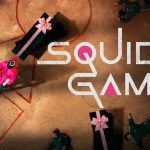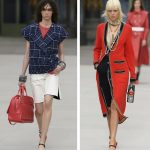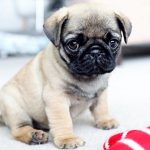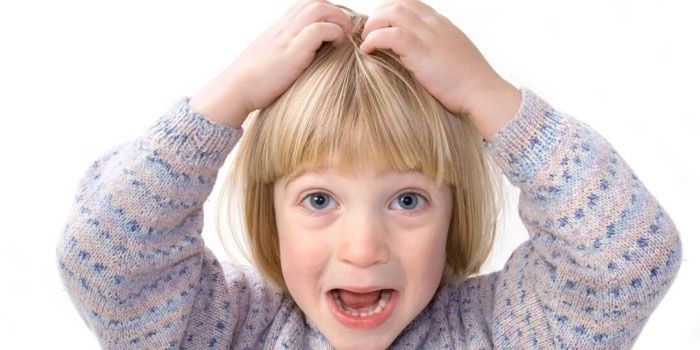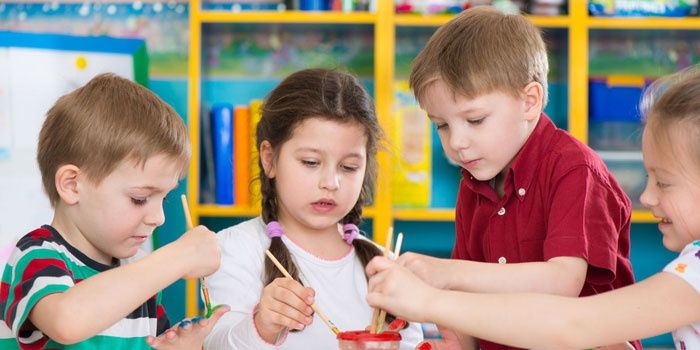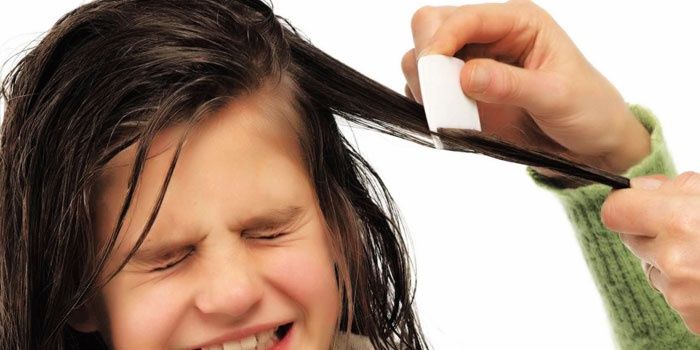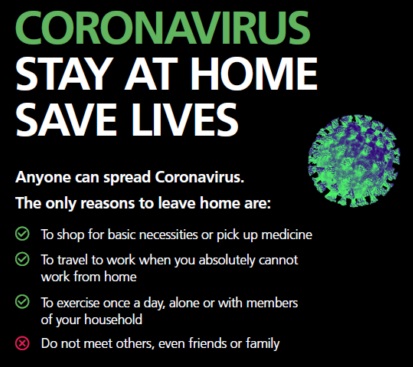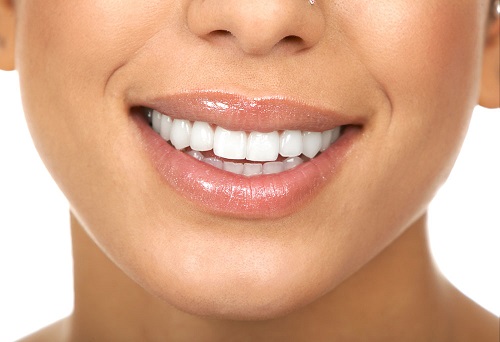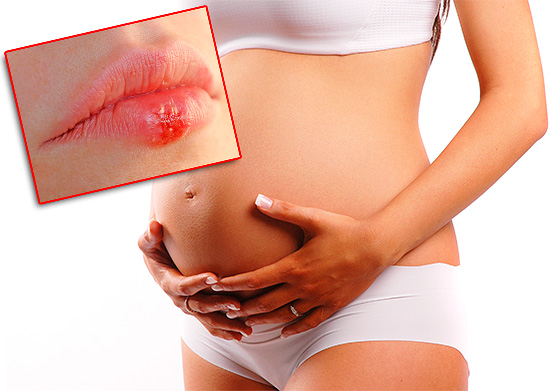Content
- What is lice
- Types of Lice
- Where do lice come from on the head
- Symptoms of Pediculosis
- Diagnosis of lice
- Pediculosis treatment at home
- Lice prophylaxis
Lice or lice is a parasitic disease of the skin and hair. It is useful to know how it can appear, because it is transmitted from person to person instantly. Symptoms of lice, methods of treatment and prevention of occurrence – important information for parents and the child, because children are at risk.
What is lice
Many people wonder: lice – what is it? Doctors and medical specialists answer him that this is a disease that causes parasites – lice. They settle on the scalp, feeding on human blood. In appearance, lice are small insects without wings of various shapes. They have legs and a small movable proboscis. Carriers of lice and sources of infection are homeless people with inadequate hygiene.
Types of Lice
Lice are small in size, about a sesame seed. They are painted in gray-brown color, have 6 legs, thanks to which they quickly move through the hair. If the louse is drunk with blood, it becomes red or black. Lice feed constantly so as not to die. Insects lay oval eggs with a yellowish size of no more than a millimeter, from which a new individual emerges a week later.
Otherwise, the eggs are called nits, they can be easily confused with dandruff, but unlike them, they are firmly glued to the base of the hair with a special substance. They can not be shaken off the hair, so the nits are carefully combed out after the treatment. Head, pubic and body lice can live on a person, each of which differs in size and places of congestion.
Head louse
Dark color, long abdomen are lice in the head of a person. They are called head because they are concentrated on the hair, females are larger than males. This type is characterized by rapid reproduction. After laying the eggs before the maturation of the female with reproductive ability, only 16 days pass, and under adverse conditions – a month. Head louse is extremely productive – for its life, which lasts up to a month, it lays 80-100 eggs. It turns out that on the day she lays 3 eggs, which quickly turn into adults and pester the patient.
The stages of the life cycle of a human head louse causing lice:
- 1 mm egg develops a week;
- 3 stages of the nymph, at which the future insect grows, molts, for 3 days it turns into a nymph of the first age, for 5 – the second, for 8 – the third;
- stage of an adult insect – a nymph molt and is ready for reproduction, it begins to mate with males immediately after leaving the nymph.
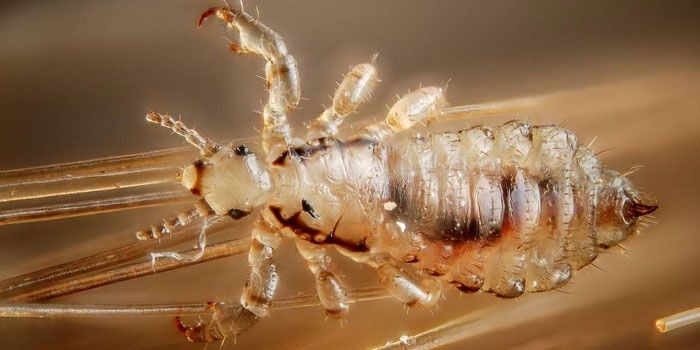
Pubic Louse
Darkish in color with a wide, strongly shortened abdomen, lice belong to the pubic areas. Their habitat is groin, buttocks, armpits, eyebrows and eyelashes. Pubic insects differ from the head structure of the legs, but the cycle of their development is similar in view of the same breeding conditions. Females lay up to 50 nits, they feed heavily on blood, form nymphs of the first, second and third order, then an adult individual hatching – an adult.
Cootie
Clothes lice live on clothes and chest hair. They look like a head, but differ in a yellowish color without black dots on the abdomen. These lice lay more than 300 eggs during their life; they are characterized by increased resistance to cold and starvation. You can destroy nits, nymphs and adults only by boiling. Bites of clothes insects look like scabies, blood points turn into follicles and become inflamed.
Where do lice come from on the head
It’s easy to get lice: head lice are wound up due to close contact with each other or when combing with someone else’s hairbrushes, using hair accessories. In kindergarten, a child can become infected from other children through games, fights – lice jump from one person to another. Adult pediculosis can be infected even by public transport or at public events. The body louse is carried through clothes or bedding, pubic – actively propagates in those who rarely change underwear, pediculosis can be transmitted through sexual intercourse, common pools.
Symptoms of Pediculosis
If you study lice – what it is – then you can encounter the problem of its symptoms. Signs of the disease are:
- itching of the scalp – occurs due to the ingestion of a parasite in the saliva wound, causing irritation;
- a child or an adult constantly itches because the number of lice is increasing;
- in daylight and close examination of the scalp, nits are visible;
- pubic and body insects leave blood spots on the skin, which, if untreated, becomes dry and looks like sprinkled with flour.
Diagnosis of lice
In the case of the question: pediculosis of children – what is it, parents can suspect the disease for specific symptoms. A dermatologist makes a diagnosis of the disease, he also prescribes a medicine. The basis for the diagnosis is complaints of itching, scratching of the scalp, body or pubis. At the reception, the doctor will examine the hair, if nits and scratches are found, he will prescribe a treatment for pediculosis.
Pediculosis treatment at home
The first rule for getting rid of head lice is thorough hygiene using specialized shampoos, conditioners and lotions. You need to use them according to the instructions, for children to use means specially designed for them. The best way to treat pediculosis for children and men is to shave baldness from the places where lice were found – if the skin is smooth, the insects will not cling to anything, so if they cannot parasitize, they will die.
Thoroughly combing and processing with lotions will help girls with long hair, and chemical coloring will help women. From lice only boiling and special processing of clothes and bedding will help. If pediculosis is found in one member of the family, everyone else should be treated, because the risk of transmission of parasites is great. You also need to process all bedding, linen and clothes. After processing, iron all seams thoroughly with an iron..
Medical preparations
Modern medicine offers many effective remedies for pediculosis, which are prescribed by a doctor:
- from head parasites a special comb, shampoo with Malathion lotion, Permethrin preparations, 20% water-soap emulsion of benzyl benzoate and Pedilin will help;
- emulsion Medifox or Benzyl benzoate with a concentration of 20%, Loncida solution or Para-plus aerosol, Spray-Pax will help from pubic insects;
- Permethrin and Phenotrin are rubbed on the scalp, after which they do not wash for 2.5 weeks to obtain the effect;
- Reed, Anti-Bit shampoos are applied according to the algorithm for 10 minutes, washed off, the course of treatment is 10 days;
- drugs for pediculosis can not be used during pregnancy, on the eyelashes and eyebrows – for this, use simple tweezers or moderately lubricating with petroleum jelly;
- crusts after lice are removed with salicylic, boric or sulfur-tar ointment.
Treatment of lice with folk remedies
People have always used traditional medicine to cure head lice. Here are some recipes for controlling parasites:
- lubrication of the scalp with kerosene or oil, wrapping in polyethylene is effective, but it threatens the appearance of dermatitis, dangerous burns;
- the use of decoctions of beets, wormwood, rosemary, vinegar – they were supposed to wash hair, but the approach is ineffective and time-consuming;
- smear the scalp with dust or treat with dichlorvos – daredevils in the fight against pediculosis risk getting serious poisoning.
Lice prophylaxis
A popular question: adult pediculosis – what is it, cannot remain without attention about the prevention of the disease. Better to prevent the disease than to get rid of parasites and treat the consequences. The basic rule is hygiene – wear only clean linen, regularly change bedding, take a shower. Do not give your combs, hairpins to other people, do not try on other people’s hats. To prevent recurrence of head lice, it is worth including the use of tea tree oils, lavender, and ironing clothes carefully..
Similar articles
- My neck hurts – what should I do? Causes of neck pain in adults and children, treatment and exercises
- Adenovirus infection in children and adults – causes. Symptoms, treatment and prevention of adenovirus infection
- Hydrocephalus of the brain – what is it. How to treat brain hydrocephalus in adults and children
